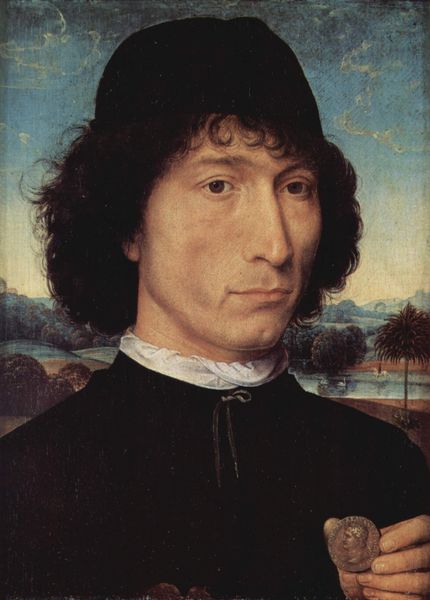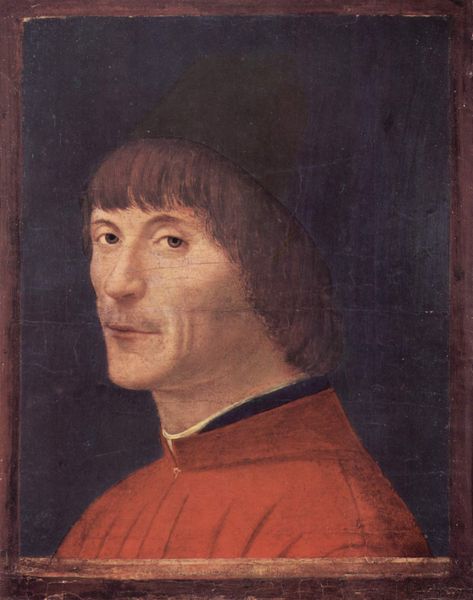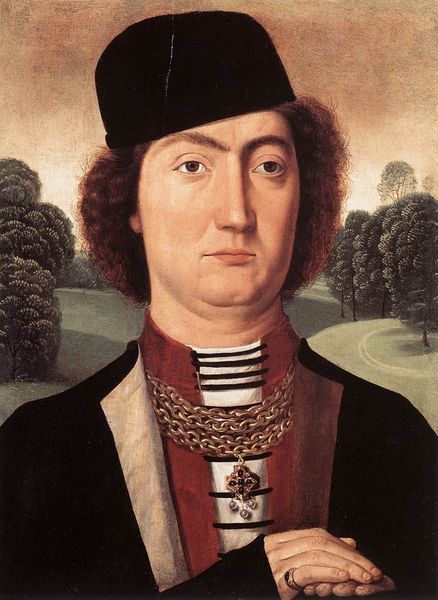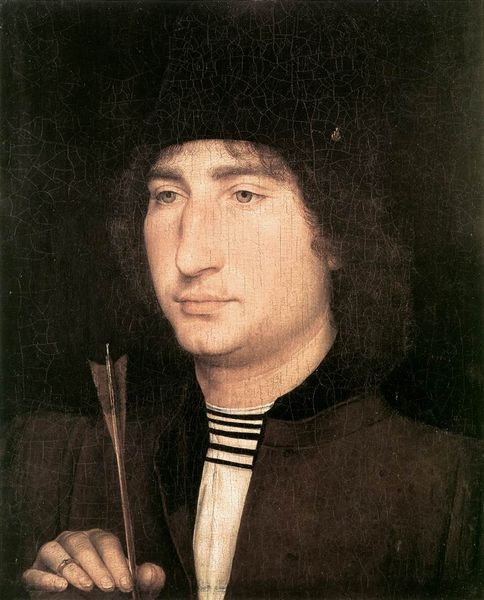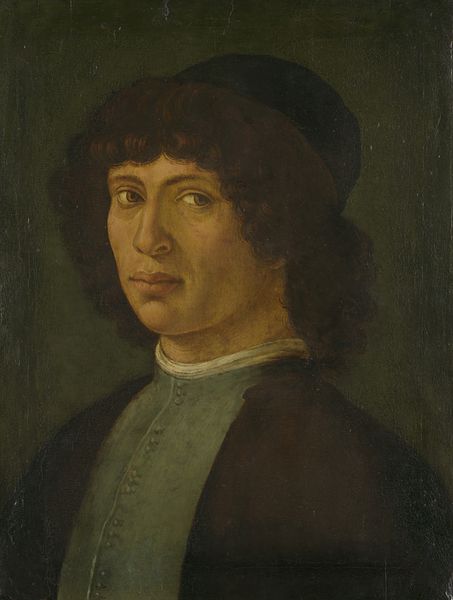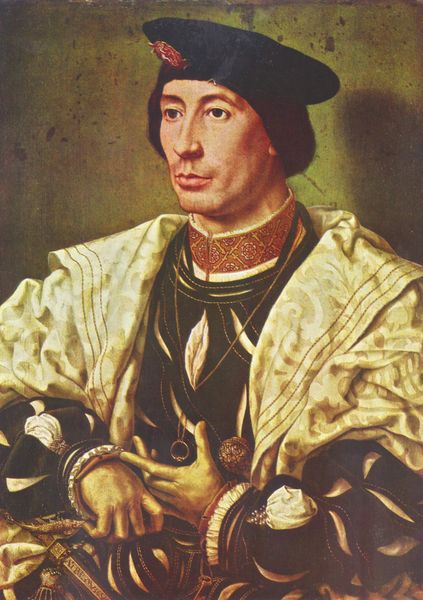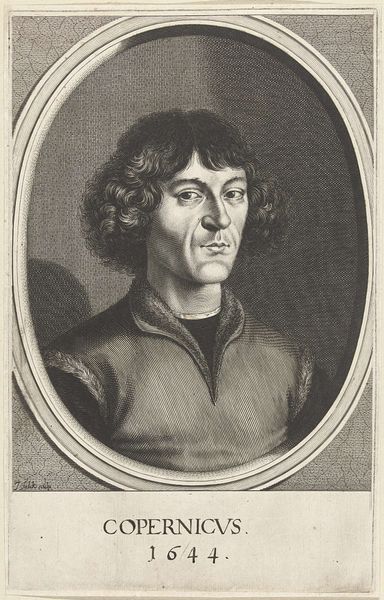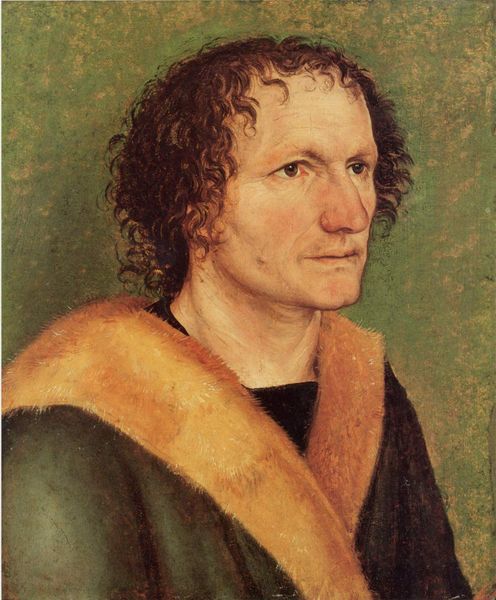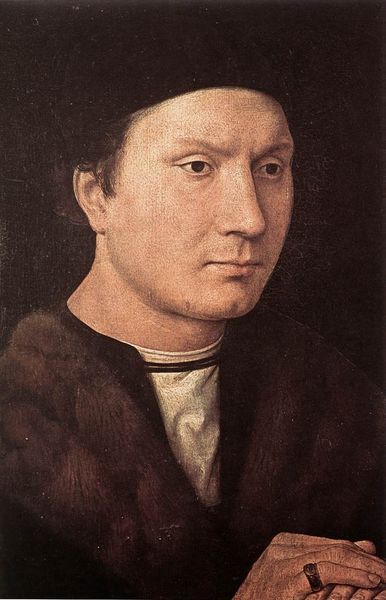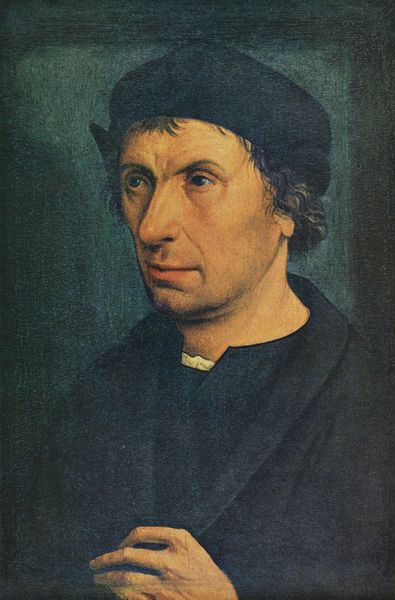
painting, oil-paint
#
portrait
#
painting
#
oil-paint
#
landscape
#
early-renaissance
#
realism
Dimensions: 30 x 22 cm
Copyright: Public domain
Curator: Looking at Hans Memling's "Portrait of a Man at Prayer before a Landscape," created around 1480 and currently held at the Mauritshuis, I’m immediately struck by the man's composed expression against the serene, almost idyllic background. Editor: My first thought is, the portrait breathes this palpable stillness. It's not just visual, it feels like a frozen moment ripe with untold stories. It also poses questions around gender and performativity of the subject portrayed; notice the almost velvet like smoothness of the facial details. Curator: Indeed, and that stillness is intentional. The act of prayer itself signifies introspection and a connection to the divine, themes frequently explored in early Renaissance art. Notice, for instance, his prayer beads. These function as a visual marker of religious devotion. In terms of the setting, do you think this painting may speak to the complex nature of class, identity and religion during this period? Editor: I would agree with your suggestion of religious symbolism within this portrait. Prayer bead symbols speak to performativity in ways we still experience it today. The fur garment of our subject also speaks to the sitter's position of power. I cannot ignore that this power seems primarily only applicable for and towards male and male-presenting individuals, whose wealth or authority allowed the subject to be seen, let alone exist within portraiture such as this. In considering the use of light across the overall scene; is this a suggestion of the dichotomy of masculine experience versus feminised nature, or feminine features being present in the background, and so not prioritized? What are your initial views regarding the relationship between our central figure and nature within this portrait? Curator: The subtle detailing of the landscape—the winding river, the distant town—places our man in a space of both earthly beauty and divine creation, reflective of Early Renaissance humanism and emphasis on both spirituality and nature. There is undoubtedly a feeling of distance from these figures of landscape; however perhaps one could consider this feeling more about their spatial positioning, in which figures were less a subject of a single piece as well as being objects situated in that painting? Editor: The work, therefore, provides us with an insight into not only this one man's moment of devout pause, but reflects broader themes and questions regarding how those holding positions of power perform masculinity and religious identity. Curator: I think exploring how these artworks mirror and shape the social consciousness of their time is deeply insightful, leaving me with fresh ways to consider not just what the artist represented, but also what that representation communicated culturally.
Comments
No comments
Be the first to comment and join the conversation on the ultimate creative platform.
